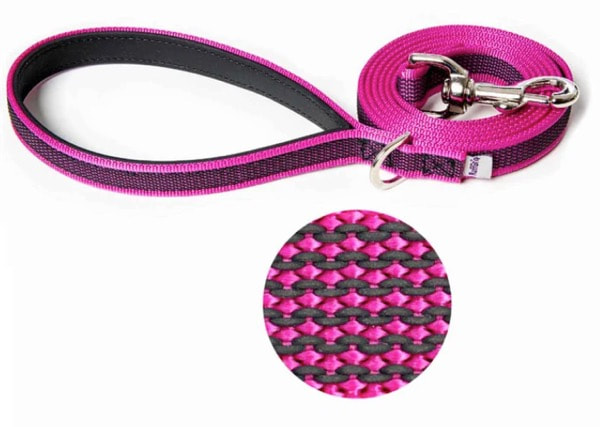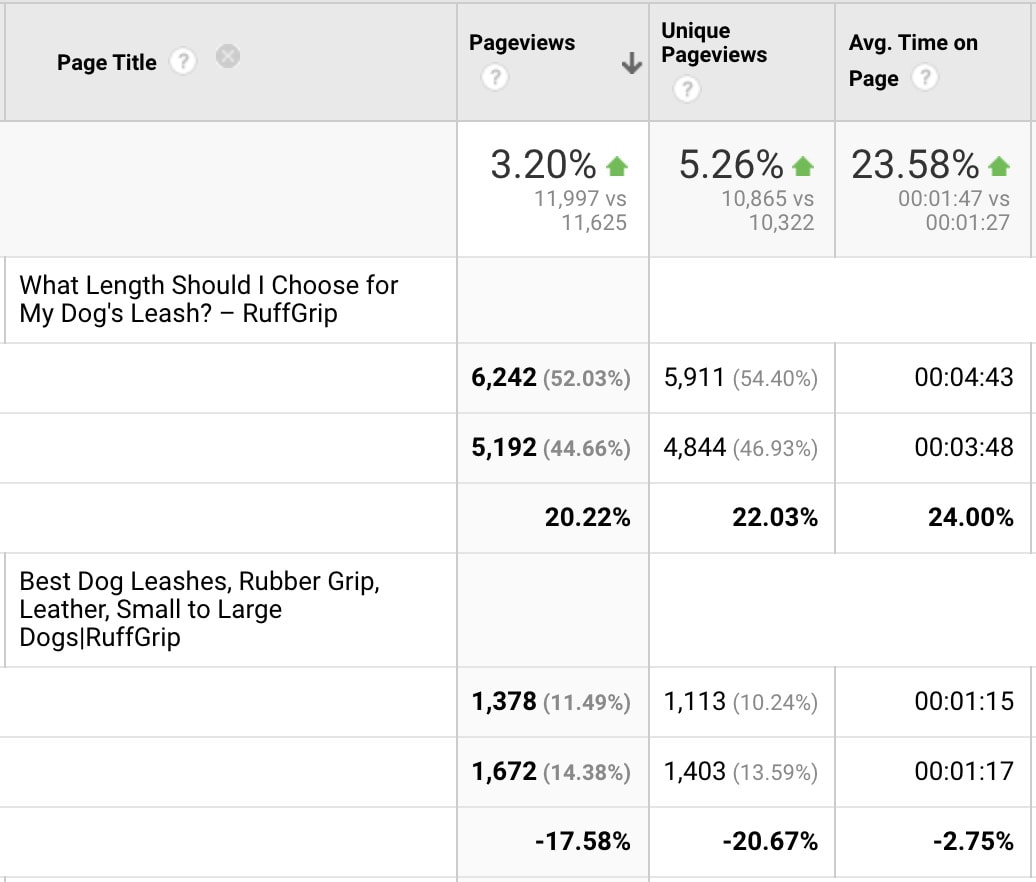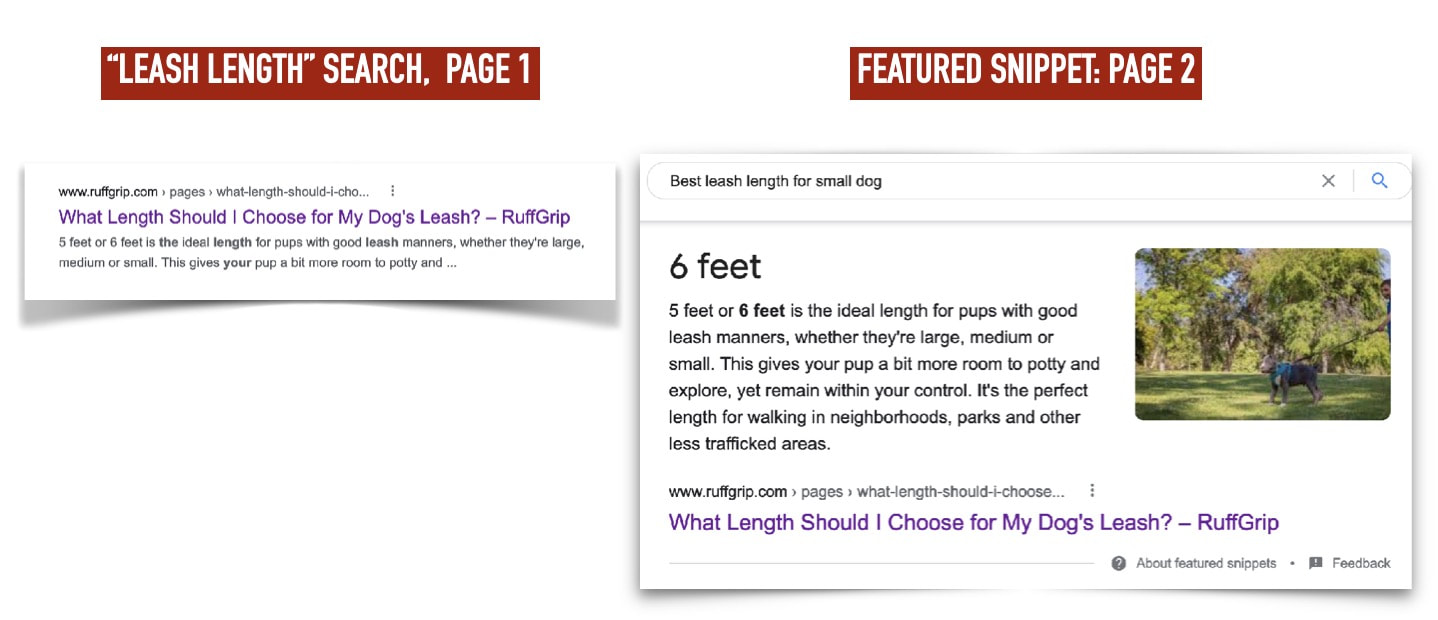|
This is a case study about how we took a strategic look at a client’s dog product and defined a creative content marketing strategy to increase website traffic in a highly competitive market. Selling what is a fairly simple product like dog leashes online isn’t easy. You can buy one almost anywhere, from drugs stores to big box, let alone on Amazon. The first step we took for RuffGrip was to find differentiation value. We looked to the product’s attributes to help us determine what might set our client’s line of dog leashes apart from others in the category. The most significant differentiators were the grippy rubber threads woven through the leash material and leather bands sewn at periodic intervals The next step was to define the benefits of that grip, who would benefit most, and in what situations. This formed the basis of the value proposition: RuffGrip dog leashes have a non-slip and comfortable grip which provides greater control of dogs in all types of weather, hot, cold, wet, or dry, leading to a safer experience for pack leader and dog alike than plain nylon leashes. Product line messaging came next, such as:
Messaging translated into product copywriting, such as: A Reliable Grip is a Safe Grip Trainers and pet owners love these leashes made with grippy material superior to plain nylon for control and comfort even in wet and cold conditions. We used this approach, and built out the site from there with appropriate product and lifestyle imagery, to support the messaging, and fully build out the ecommerce site on Shopify. Driving Traffic with Content Strategy The next step was to do the keyword research and SEO (Search Engine Optimization) the site, along with other basic marketing attraction techniques. Then we moved onto content development beyond the core pages (yet keeping the value prop and messaging in mind). Knowing that Google likes to surface sites that answer particular questions, we then used the keywords to determine the types of questions dog owners had about leashes. But it couldn’t just be any questions. In an almost commodity business, it can be important to reach people before they’ve had a chance to get accustomed to a particular brand or place to shop, so we wanted to reach new dog owners. The trigger event in the purchase path, which prompts people to look for leashes in the first place, would be getting a new puppy or rescue dog. Based on the deep knowledge my client has about dogs, we used the following methods to come up with a list of typical questions people have:
Bingo! Leash Length is a Hit. The question we decided to create content around was, “What leash length should I buy for my dog?” To build out the content, I asked my client how she would answer that question. She created an outline, and we proceeded to write and create a page to answer that very question. Of course, we SEO'd it too. The traffic results have been good to say the least. In the 6 months since we published the page, overall website traffic to the site has increased 16%. That page now gets more page views than even the home page, with visitors spending over 4 minutes on it. Even with competitors jumping in with similar articles, Google continues to reward us with great position (most of the time in first place), and we’re consistently featured with an answer snippet box. Not all of the content you create is going to yield the same results. What’s important is that you start with a strategic approach, apply creativity, and measure your results. If the numbers are good, follow the same process. If not, analyze your results to determine what you can tweak up and try again. It’s not always easy to find the sweet spot, and there’s a lot more that goes into the content game. With a good strategy, that's also creative, your odds of boosting website traffic go way up.
Comments are closed.
|
�
Robbin BlockSharing what I know and love about marketing small to medium businesses. About me Categories
All
|
BLOCKBETA MARKETING
Blockbeta is a marketing consulting firm specializing in niche businesses with unique business models. Our focus is on developing value propositions, website transformation, and amplification. Business strategy, not tactics alone, drives our creative action plans, websites, and digital marketing programs.
|
featured Marketing servicesWebsite buildingresources |
Disclosure: Some of the links on this site are affiliate links. If you click on the link and purchase an item, we will receive an affiliate commission.
Icons from Flaticon — Chaos by Freepik, Brand by Geotatah, Website by Eucalyp
Icons from Flaticon — Chaos by Freepik, Brand by Geotatah, Website by Eucalyp
Privacy Policy | Copyright © 2024, Block Media LLC. All rights reserved. Seattle, WA * 206-335-5929






 RSS Feed
RSS Feed
